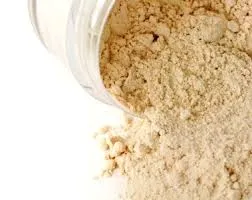Fillers for Polymers Enhancing Material Properties and Performance
In the realm of polymer science and engineering, fillers play a pivotal role in the formulation of various composites. Fillers, which are often inert materials added to a polymer matrix, are used to enhance or modify certain properties of the polymer. Their integration can lead to improved mechanical strength, thermal stability, reduced costs, and various other desirable characteristics. This article explores the types of fillers, their benefits, and applications in the polymer industry.
Types of Fillers
Fillers can be broadly classified into two categories reinforcing and non-reinforcing fillers. Reinforcing fillers, such as glass fibers, carbon black, and aramid fibers, are typically used to enhance the mechanical properties of polymers. These fillers increase the strength, stiffness, and impact resistance of the final product, making them suitable for demanding applications, including automotive parts and structural components.
Non-reinforcing fillers, on the other hand, are primarily used to improve the cost-effectiveness and processability of the polymer without significantly enhancing its mechanical properties. Common examples include calcium carbonate, talc, clay, and barium sulfate. These fillers can improve the dimensional stability, reduce density, and enhance the flow characteristics of the polymer during processing, making it easier to mold or extrude.
Benefits of Using Fillers
The addition of fillers to polymer matrices offers a plethora of benefits. One of the most significant advantages is cost reduction. By incorporating low-cost fillers, manufacturers can reduce the overall production cost while maintaining adequate performance. For instance, using calcium carbonate as a filler in polyethylene can significantly lower material costs while still allowing for sufficient mechanical properties for many applications.
Another benefit is enhanced mechanical properties. Fillers like glass fibers can substantially increase the tensile strength and stiffness of polymers, making them suitable for high-performance applications. Additionally, certain fillers can improve thermal stability, UV resistance, or flame retardancy, broadening the application range of the resulting composite materials.
fillers for polymers

Moreover, fillers can also modify the aesthetic properties of polymers. For example, adding certain pigments or fillers can provide coloration and opacity, which is particularly important in consumer products, packaging, and architectural applications.
Applications in Various Industries
The use of fillers in polymers spans numerous industries, from automotive to construction, electronics, and consumer goods. In the automotive industry, glass fiber-reinforced plastics are employed for parts like bumpers, dashboards, and structural components, providing significant weight savings and enhanced impact resistance.
In construction, mineral fillers such as talc and calcium carbonate are incorporated into materials like concrete and asphalt to improve workability and reduce costs. Meanwhile, in the electronics sector, polymer composites with specific fillers are used for circuit boards and casings due to their improved thermal and electrical properties.
Consumer goods also benefit from fillers. For example, household items made from polypropylene are often filled with talc or calcium carbonate to provide durability while keeping costs down. Moreover, cosmetics and personal care products frequently utilize polymer fillers to achieve desired textures and properties.
Future Trends
As technology advances, the demand for high-performance composite materials is expected to increase, leading to further innovations in filler applications. Researchers are exploring nano-fillers and bio-based fillers that can offer unique benefits without compromising environmental sustainability. The growing emphasis on recycling and sustainability in the polymer industry is also prompting the development of fillers derived from renewable resources.
In conclusion, fillers play a crucial role in the polymer industry by enhancing material properties, reducing costs, and broadening application potential. As the demand for innovative materials continues to grow, the research and utilization of fillers will remain at the forefront of polymer technology, contributing to the evolution of numerous industries. With ongoing advancements, the future of fillers in polymers holds enormous promise, paving the way for smarter, more efficient, and sustainable material solutions.

